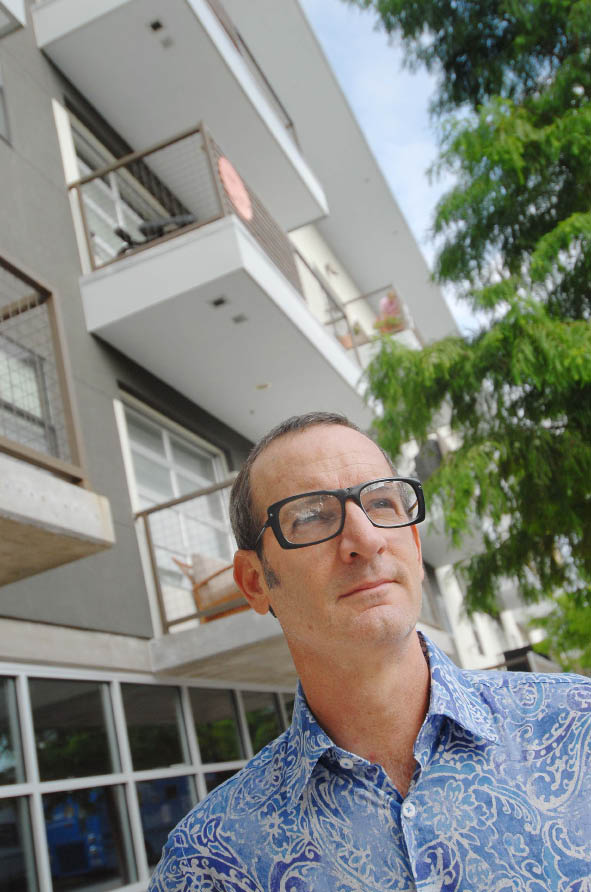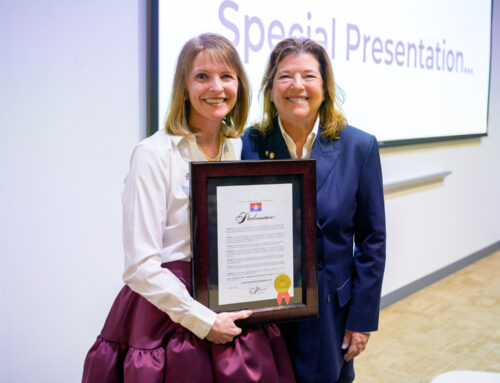 Zad Roumaya, who developed Buzz Lofts in the Cedars neighborhood, had a plan for the two-story retail development at Garland and Gaston. He wanted to turn the 5.2-acre Lakeview Shopping Center into Wrock, a residential-over-office/retail development that he hoped would turn the “awkward” intersection around. He and the property’s owners, Ty Commercial, got it rezoned just as the economy was tanking. So the project is on hold due to a lack of financing. But Roumaya sat down to talk with us about the future of Garland Road and other developments.
Zad Roumaya, who developed Buzz Lofts in the Cedars neighborhood, had a plan for the two-story retail development at Garland and Gaston. He wanted to turn the 5.2-acre Lakeview Shopping Center into Wrock, a residential-over-office/retail development that he hoped would turn the “awkward” intersection around. He and the property’s owners, Ty Commercial, got it rezoned just as the economy was tanking. So the project is on hold due to a lack of financing. But Roumaya sat down to talk with us about the future of Garland Road and other developments.
Was Lakeview Shopping Center, where you were planning to build Wrock, ever successful?
It’s a two-tiered site, and there’s about 60,000 square feet of building there that through the years has been retail or casual restaurant, and most of it’s empty now. It’s a very challenging traffic corner, and I don’t think it’s ever flourished. There are three or four tenants. There’s an optical shop, a dentist and a Subway. And in the back, there’s a billiards place.
It seems like a perfect example of a design that is not sustainable.
Yes, that’s a pretty traditional ’80s product. I know what happened there. They were geographically challenged because it’s on a hill. So they made the building meet the land grade.That’s why it’s two-tiered. And how many two-tiered shopping centers are successful in Dallas?
That seems like it should be a successful retail corner, and yet, it’s not. Why is that?
The intersection needs to be fixed, and that’s part of the Garland Road Vision plan. It has to be smart enough to let traffic flow through there, but it also has to create some gating and safety. Frankly, the intersection is kind of derelict. There’s so much potential, and there’s such a smattering of different owners and uses that are outdated. That intersection is too important not to be looked at in the next few years, and I hope it will be reconsidered.
How would your plan for Wrock have addressed the problems there?
The city worked with us with some very specific definitions of live/work. So the bottom level had some opportunity for live/work. The zoning allows them to live on the property, or even off the property within the community, and office downstairs or have a storefront. And that would engage people in the community in daily activity. When the intersection did get fixed, we knew that the building could adapt to provide neighborhood services, retail and the like, once all that snapped together. That whole intersection is a potential possible development for the uses that could be on both sides of the street. That spark could be a catalyst for development on the other side.
Speaking of the Garland Road Vision plan, what do you think that will accomplish for our neighborhood?
At times like this, when the market is down, that’s the time for people with vision. The Garland Road Vision is a great example of how to compromise on density and how you resolve issues with mass transit and structure parking to promote people actually getting out of their cars. I would encourage people to plug into that process because sometimes citizens and taxpayers don’t think it’s necessary to get involved with those things. But those planning processes often become a plan, and it’s driven by people who live there. When the market does come around, and financing is more readily available, developers are going to move on the White Rock area. And when they do, we can say, “OK, here is our vision for this area.”





